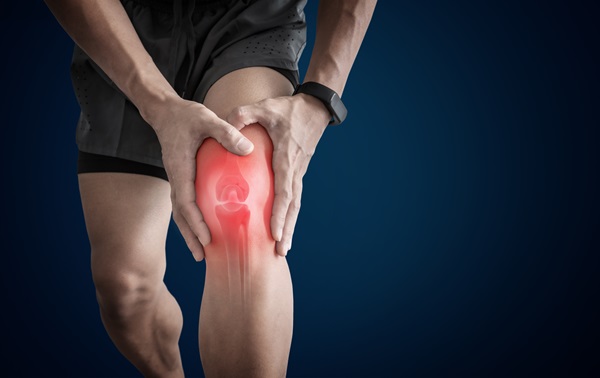How Regenerative Medicine Can Help Relieve Joint Pain

Those struggling with joint pain may find relief through regenerative medicine. This branch of medicine focuses on treatments that harness the body's natural healing power to relieve pain, aid healing, and treat chronic conditions. Here is more on the benefits of regenerative medical treatments and how they relieve joint pain.
Regenerative medicine explained
Regenerative medicine aims to replace organs or tissues damaged by disease, trauma, or the aging process. Practitioners have used this treatment for decades in wound healing and pain treatment. By using breakthroughs in cell therapy, gene therapy, and bioengineering, practitioners can help stimulate and support the body's healing powers to restore the form and function of damaged or diseased tissues.
Benefits of regenerative medicine
Regenerative medicine therapies have shown promise in treating several conditions related to joint pain, including the following:
- Osteoarthritis
- Rheumatoid arthritis
- Golfer/Tennis elbow
- Meniscus tears
- Rotator cuff tears
- Joint pain from injuries/trauma
- Tendinitis
- Bursitis
The various techniques can be employed alone or in combination with other treatments. They can provide minimally invasive pain solutions when traditional treatments fail. In addition, regenerative medicine may help those with joint pain avoid surgery or long-term medication use and the complications and side effects that can come with those treatments.
Treatment options for joint pain
There are four key avenues for treating joint pain with regenerative medicine. Here is a closer look at each one.
Platelet-rich plasma treatment
Also known as PRP therapy, this treatment addresses various joint problems and has helped athletes recover from injuries for decades. It involves preparing a person's blood, containing growth factors, proteins, and other beneficial agents. The doctor then injects this preparation into the affected joint to boost healing and relieve pain and other symptoms. Because the preparation contains the patient's blood, PRP therapy is safe. PRP can help reduce pain and stop the progression of osteoarthritis in the knee.
Prolotherapy
Also known as regenerative injection therapy, prolotherapy may stimulate the body's healing mechanism. During prolotherapy, the practitioner injects a solution, typically a salt or sugar solution, into the affected joint. This solution acts as an irritant that stimulates the body's immune response, leading to new tissue growth.
Research into its mechanism and effectiveness is ongoing. However, many patients have reported pain and symptom relief. Currently, prolotherapy is considered an alternative therapy as a complement to other traditional and regenerative medicine therapies.
Stem cell therapy
Stem cells can become any type of cell they are near and offer tremendous potential to help the body regenerate new tissue. During this therapy, a concentrated preparation of one's stem cells is injected into the damaged joint. The stem cells used in the preparation are typically taken from the patient's bone marrow or fat tissue.
After injecting the stem cells into the joint, they may begin to help rebuild the damaged tissue. In addition, the anti-inflammatory properties of the stem cells can contribute to reducing joint pain and inflammation. This therapy can be combined with traditional and PRP therapy to enhance effectiveness.
Viscosupplementation
This therapy involves the injection of hyaluronic acid (HA) into the affected joints to help reduce pain and swelling. The HA works like a lubricant/shock absorber for the joint. When there is not enough naturally occurring HA, this contributes to pain and stiffness. This therapy replaces the HA that is often insufficient in those with osteoarthritis.
This treatment is FDA-approved for treating OA of the knee but can be used to treat other types of joint pain. It is intended for patients who have failed to find relief through more traditional therapies such as NSAIDs, corticosteroid injections, and aspirations. It can also be considered an alternative to surgery and medication in certain patients.
How treatment works
We customize our treatment plans to the individual. Our team works with each patient to identify the source and cause of the pain to match them with the right combination of treatments. Best results often come from a combination of therapies supported by physical therapy, proper nutrition, and a healthy lifestyle.
Say goodbye to joint pain
No one should have to live with chronic joint pain. {{DBA}} offers innovative solutions to help patients heal, regain range of motion, and live pain-free lives. If you are struggling with joint pain, we can help.
Request an appointment here: https://sjrm-tn.com or call Spine & Joint Regenerative Medicine at (423) 424-1529 for an appointment in our Ooltewah office.
Check out what others are saying about our services on Yelp: Read our Yelp reviews.
Related Posts
Regenerative medicine represents a shift in how chiropractors approach injury care and pain management. Rather than focusing only on symptom relief, these innovative therapies rebuild tissue strength and joint mobility with the help of the body’s natural healing processes. When combined with chiropractic adjustments, regenerative medicine provides a clear path to recovery and performance.At its…
You have probably heard about sports medicine, but how much do you know about this branch of medical care? If you are an avid athlete, chances are good that you will one day need help from a professional in this industry. You do not need to be a high-level athlete to visit a therapist or…
It is no secret that your physical health greatly impacts your day-to-day functioning and, in turn, your mental health. This is why chiropractors are dedicated to promoting healing within your musculoskeletal system—to help your overall well-being. Take a closer look at how this medical professional can greatly impact how you view and care for your…
Prolotherapy offers a minimally invasive option for musculoskeletal pain by engaging the body's natural repair processes. In regenerative medicine and sports rehabilitation, prolotherapy aims to stabilize lax ligaments, calm persistent tendon irritation, and reduce joint pain that limits activity. When guided by a chiropractor, physical therapist, or sports medicine clinician, treatment supports steady progress back…
